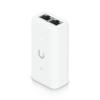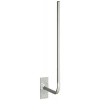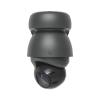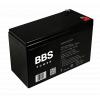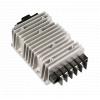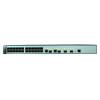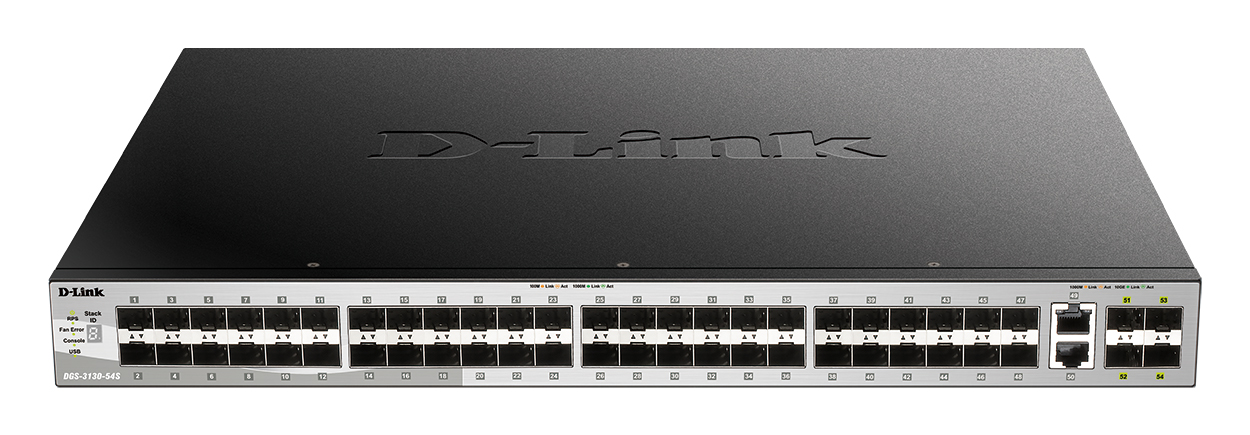-
zł
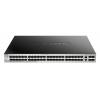
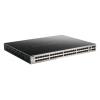
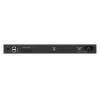
The DGS-3130 Series Gigabit Layer 3 Stackable Managed Switches are designed to address the needs of small to medium-sized business networks by incorporating L2 and L3 features that enable the switches to be deployed in a variety of environments and topologies. Together the hardware and software enhancements combine to create a family of powerful, flexible and cost-effective switches. The DGS-3130 Series allows multiple switches to be connected to form a single physical or virtual stack. This increases redundancy over multiple physical units, simplifies management, and provides a single IP address to manage all members in the stack. The DGS-3130 Series includes the latest security features such as Multi-layer and Packet Content Access Control Lists (ACL), Storm Control, and IP-MAC-Port Binding (IMPB) with DHCP Snooping. The DGS-3130 Series supports multiple authentication mechanisms such as 802.1X, Web-based Access Control (WAC), and MAC-based Access Control (MAC) for strict access control and easy deployment. A rich set of multilayer QoS/CoS features to ensure that critical network services such as VoIP, video conferences, IPTV, and IP surveillance are always given high priority.
Features
High Availability and Flexibility
- 48 x SFP ports
- 6 x 10 Gigabit ports (2 x 10GBASE-T and 4 x 10G SFP+ embedded uplink ports)
Reliability
- Redundant power supply (RPS) support
- Ethernet Ring Protection Switching (ERPS)
- Embedded 6 kV surge protection on all Gigabit Ethernet ports and on all GE RJ-45 access ports
- IEEE 802.1D/802.1w/802.1s Spanning Tree
- Loopback Detection (LBD)
L3 Features
- Static Route
- RIP/RIPng
- OSPFv2/v3
Operations, Administration and Maintenance
- IEEE 802.3ah Ethernet Link OAM
- IEEE 802.1ag/ITU-T Y.1731 Service OAM
High Bandwidth Stacking
- Physical stack of up to 9 units
- Supports long-distance stacking over fiber
- 80 Gbps per device physical stacking bandwidth
Specifications
| DGS-3130-54S/SI | |
| Ports |
48 x SFP ports 2 x 10GBASE-T ports 4 x 10G SFP+ ports |
| Optional Redundant Power Supply | DPS-500A |
| Console Port | 10/100/1000BASE-T RJ-45 port for out-of-band CLI management |
| Management Port | 10/100/1000BASE-T RJ-45 port for out-of-band IP management |
| Stacking Ports | 4 |
| Stacking Cost |
2 |
| USB Ports | 1 x USB 2.0 Type A port |
| Performance | |
|---|---|
| Switching Capacity | 216 Gb/s |
| 64-Byte Packet Forwarding Rate | 161 Mp/s |
| Packet Buffer Memory | 4 MB |
| Physical | |
| MTBF | 520,861 hours |
| Acoustics |
Max: 54 dB |
| Heat Dissipation |
446.99 BTU/h |
| Power Input | 100 - 240 V AC, 50/60 Hz |
| Max Power Consumption |
131 W |
| Dimensions (W xD x H) | 440 x 350 x 44 mm |
| Weight | 4.52 kg |
| Ventilation |
5 x Smart fans |
| Operation Temperature | 0 to 50 ̊C (32 to 122 °F) |
| Storage Temperature | -40 to 70 ̊C (-40 to 158 °F) |
| Operating Humidity | 10% to 90% RH |
|
Storage Humidity |
5% to 90% RH |
| Emission (EMI) | FCC Class A, CE Class A, VCCI Class A, IC, RCM, BSMI, CCC |
| Safety | CB, cUL, BSMI, CCC |
| Software Features | |
| Stackability |
Physical stacking
Virtual stacking
|
| L2 Features |
MAC Address Table: 16K (16,384) entries Flow Control
Jumbo Frames up to 9 Kbytes 802.1AX/802.3ad Link Aggregation
Spanning Tree Protocols
Loopback Detection Port Mirroring
Flow mirroring
VLAN Mirroring RSPAN L2 Protocol Tunneling Ethernet Ring Protection Switching (ERPS) v1/v2 |
| L2 Multicasting |
IGMP Snooping
MLD Snooping
|
| L3 Multicasting |
IGMP v1/v2/v3 PIM-SM for IPv4 |
| VLAN |
VLAN Group
GVRP
Double VLAN (Q-in-Q)
802.1Q Auto Surveillance VLAN Port-based VLAN 802.1v Protocol-based VLAN Voice VLAN MAC-based VLAN VLAN translation Multicast VLAN (ISM VLAN for IPv4/IPv6) Asymmetric VLAN Private VLAN VLAN Trunking Super VLAN |
| QoS (Quality of Service) |
802.1p 8 queues per port Queue Handling
Policy Map
Congestion Control
CoS based on
Bandwidth Control
Three Color Marker
|
| Access Control List (ACL) |
ACL based on
Time-based ACL CPU Interface Filtering Max. ACL entries:
|
| Security |
Port Security
Broadcast/Multicast/Unicast Storm Control D-Link Safeguard Engine DHCP Server Screening IP Source Guard DHCP Snooping IPv6 Snooping Dynamic ARP Inspection (DAI) DHCPv6 Guard IPv6 Route Advertisement (RA) Guard IPv6 ND Inspection Duplicate Address Detection (DAD) ARP Spoofing Prevention
L3 Control Packet Filtering Unicast Reverse Path Forwarding (URPF) Traffic Segmentation SSL
SSH
BPDU Attack Protection DOS Attack Prevention |
| AAA |
Guest VLAN 802.1X Authentication
Privilege Level for Management Access Trusted Host RADIUS/TACACS+ Accounting Web-based Access Control (WAC)
RAIDUS and TACACS+ Authentication Authentication Database Failover Compound Authentication MAC-based Access Control (MAC)
|
| Green Features |
Energy-Efficient Ethernet (EEE) Power saving by link status Power saving by cable length Power saving by LED shut-off Power saving by port shut-of Power saving by system hibernation• Time-based PoE |
| OAM |
Cable Diagnostics 802.3ah Ethernet Link OAM D-Link Unidirectional Link Detection (DULD) Dying Gasp 802.1ag Connectivity Fault Management (CFM) Y.1731 OAM Optical Transceiver Digital Diagnostic Monitoring (DDM) |
| Management |
Web-based GUI
Command Line Interface (CLI) Telnet Server for IPv4/IPv6 Telnet Client for IPv4/IPv6 TFTP Client for IPv4/IPv6 DNS Client for IPv4/IPv6 Secure FTP Server for IPv4/IPv6 SNMP
SNMP Traps System Log for IPv4/IPv6 Syslog Server sFlow Multiple images/ Multiple Configurations RMON v1:
RMON v2:
LLDP/LLDP-MED BootP/DHCP Client DHCP Auto-Configuration DHCP/DHCPv6 Local Relay DHCP Relay Option 60/61/62/125 Flash File System PPPoE Circuit-ID Tag Insertion D-Link Discover Protocol (DDP) Debug command Support IPv4/v6 SNTP Server NTPv3/v4 Password recovery/ encryption DHCP server
Command Logging SMTP DHCPv6 Prefix Delegation (PD) Ping/ Traceroute for IPv4/IPv6 Microsoft® Network Load Balancing (NLB) PD Alive (PoE Models Only) |
| L3 Features |
IPv4 ARP Entries 2048
IPv6 ND Entries:1024
IP Interface
Gratuitous ARP Loopback Interface Proxy ARP
VRRP v2/v3 IP Helper |
| L3 Routing |
Supports 1024 hardware routing entries shared by IPv4/IPv6
Supports up to 2048 hardware L3 forwarding entries shared by IPv4/IPv6 4
IPv4/IPv6 Static Route
IPv4/IPv6 Default Route PBR (Policy-based Route) Null Route Route Preference Route Redistribution RIPv1/v2/ng OSPF
|
| MIB |
RFC1065, RFC1066, RFC1155, RFC1156, RFC2578 MIB Structure RFC1212 Concise MIB Definitions RFC1213 MIBII RFC1215 MIB Traps Convention RFC1493, RFC4188 Bridge MIB RFC1157, RFC2571, RFC2572, RFC2573, RFC2574, RFC2575, RFC2576 SNMP MIB RFC1442, RFC1901, RFC1902, RFC1903, RFC1904, RFC1905, RFC1906, RFC1907, RFC1908, RFC2578, RFC3418, RFC3636 SNMPv2 MIB RFC271, RFC1757, RFC2819 RMON MIB RFC2021 RMONv2 MIB RFC1398, RFC1643, RFC1650, RFC2358, RFC2665, RFC3635 Ether-like MIB RFC2668 802.3 MAU MIB RFC2674, RFC4363 802.1p MIB Interface Group MIB• RFC2618 RADIUS Authentication Client MIB RFC4022 MIB for TCP RFC4113 MIB for UDP RFC2389 MIB for Diffserv RFC2620 RADIUS Accounting Client MIB RFC2925 Ping & TRACEROUTE MIB• TFTP uploads and downloads (D-Link MIB) Trap MIB (D-Link MIB) RFC4265 IPv6 MIB RFC4266 ICMPv6 MIB Entity MIB VRRP MIB RIPv2 MIB RFC1850, RFC5643 OSPF MIB DDM MIB (D-Link MIB) Private MIB MIB for D-Link Zone Defense RFC3621 Power Ethernet MIB DDP MIB LLDP-MED MIB |
| RFC Standard Compliance |
RFC 768 UDP RFC 791 IP RFC 793 TCP RFC 826 ARP RFC 3513, 4291, IPv6 Addressing Architecture RFC2474, RFC3168, RFC3260 Definition of the DS Field in the IPv4 and IPv6 Headers RFC1321, RFC2284, RFC2865, RFC2716, RFC1759, RFC3580, RFC3748 Extensible Authentication Protocol (EAP) RFC2571 SNMP Framework RFC 2068 HTTP RFC 2866 RADIUS Accounting RFC792 ICMPv4 RFC2463, RFC4443 ICMPv6 RFC4884 Extended ICMP to support Multi-Part Messages RFC1338, RFC1519 CIDR RFC2574 User-based Security Model for SNMPv3 RFC1981 Path MTU Discovery for IPv6 RFC2460 IPv6 RFC 2571, 2572, 2573, 2574, SNMP RFC 854 Telnet RFC 951, 1542 BootP RFC2461, RFC4861 Neighbor Discovery for IPv6 RFC2462, RFC4862 IPv6 Stateless Address Auto-configuration (SLAAC) RFC2464 IPv6 over Ethernet and definition RFC1886 DNS extension support for IPv6 |






 Polski
Polski English
English Italiano
Italiano Español
Español Čeština
Čeština Српски
Српски Deutsch
Deutsch Ελληνικά
Ελληνικά Slovenský
Slovenský

